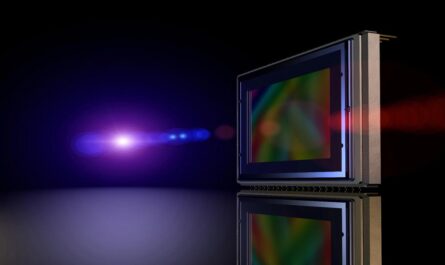Flat Flex Cables: The Unsung Heroes of Modern Electronics
Flat flex cables, also known as flexible flat cables or simply flex cables, might seem like a simple connector, but they play a crucial role in connecting various components inside modern electronic devices. These thin, flexible strips of conductive materials have entirely transformed the design and miniaturization of electronics. Let’s take a deeper look into these cables and their impact.
What are Flat Flex Cables?
Flat flex cables, as the name suggests, are thin, flat printed circuit boards made of flexible insulated conductive materials like copper. They consist of thin conductive traces embedded between flexible dielectric films made of materials like polyimide or other plastics. These traces can carry power and data signals and connect various electronic components over bends and turns.
Flat flex cables offer several advantages over traditional round wires. Their flat design allows tighter bends and packing into compact spaces. They are thinner, more durable, and less prone to breakage compared to delicate individual component wires. Their modular construction lets manufacturers quickly assemble connections. All these attributes have enabled unprecedented miniaturization in electronics.
Enabling Miniaturization and Complex Designs
Flat flex cables have been a huge enabler of the miniaturization trend seen in consumer electronics over the past few decades. Their flexibility lets designers tightly pack many connections into tight spaces within device enclosures. This has allowed electronics like smartphones to be thinner, yet pack in more components than ever before.
Modern smartphones would not be possible without flex cables. They connect myriad components on different layers and surfaces within the slim phone chassis. Flex cables eliminate the need for individual component wires, allowing motherboards, batteries, screens, and other modules to be closely layered and securely fastened together. They have also enabled complex non-planar internal geometries and curvy external designs.
Usage Across Diverse Industries
While most familiar in consumer electronics, flat flex cables have widespread applications across many other industries:
– Automotive – Used in innovations like advanced infotainment systems, driver-assistance systems, hybrid/electric components, and more.
– Medical Devices – Connect components in portable patient monitoring equipment, surgical tools, diagnostic machines, and more.
– Industrial Equipment – Route signals and power in factory automation hardware, robotics, 3D printers, CNC machines, and other automated systems.
– Appliances – Connect control boards to interfaces in appliances like washing machines, microwave ovens, air conditioners, and other smart home devices.
– Aerospace – Used in avionics, airline entertainment systems, drone electronics, space components, and other aerospace/defense applications.
– Computers and Peripherals – Found inside desktops, laptops, keyboards, mice, routers, storage devices, printers and more.
The ubiquitous usage of flat flex cables highlights their versatility and critical importance across multiple sectors beyond just consumer tech. Miniaturization remains an overarching goal in diverse fields, and flex cables continue enabling this.
New Developments and Applications
Continuous technological advancements have further expanded the capabilities and applications of flat flex cables. Some of the latest developments include:
– Ultra-thin and flexible cables: New materials allow flex cables less than 0.1mm thin that can wrap around tight cylindrical surfaces.
– High-density interconnects: Flex cables now provide over 1,000 connections per square inch for highly integrated modules.
– Rigid-flex and multilevel interconnects: Hybrid rigid-flex designs combine rigid and flexible areas for 3D arrangements.
– Embedded components: Active components like antennas, sensors, and chips can be directly integrated into flex circuits.
– Flexible displays: Fine pitch FFCs connect OLED / microLED panels and input sensors in rollable/foldable displays.
– Automotive electronics: High-temperature and heavy flex cables are used in more complex vehicle network architectures.
As innovation accelerates, flex cables will continue featuring in newer form factors and more sophisticated systems. They remain central to our transition into an increasingly connected, automated, and miniaturized technology future.
Starting as simple connections between boards, flat flex cables have transformed into an indispensable technology enabling the very designs and functions we take for granted today across every sector. Their flexible nature has been pivotal to trends like increased integration, advanced designs, miniaturization, and more complex networked systems. Looking ahead, flex cables will continue empowering innovations as technology gets ever more integrated, intelligent and immersive into our daily lives.
Note:
1. Source: Coherent Market Insights, Public sources, Desk research
2. We have leveraged AI tools to mine information and compile it



